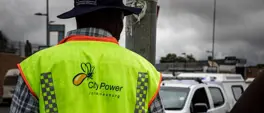PART TWO: City held to ransom | Good intentions turn into bad investments in CoJ
Orrin Singh
10 October 2023 | 10:00Building hijackings in Johannesburg’s inner city is an issue woven in complexity, strung together by the exploitation of a 2011 ConCourt ruling, ultimately leaving private property owners and investors with very little recourse in reclaiming their illegally occupied ‘ticking time-bombs.’
JOHANNESBURG - Private investors Eyewitness News spoke to said political instability within City of Johannesburg (CoJ), and lack of will, have resulted in the inner-city collapse.
For 15 years, property investor Mendel Goldman has been unable to evict the illegal occupants of a building he purchased in Hillbrow in 2008.
ALSO READ:
- PART ONE: City held to ransom | Inside the Marshalltown building takeover
- CoJ & Heritage Council to figure purpose for hijacked building gutted by fire
- Hijacked Braamfontein building impacting businesses, say private property owners
- Displaced families of second Marshalltown fire say they have nowhere else to go
Goldman, through a trust, purchased one of the oldest churches in Joburg, the Presbyterian Church on the corner of Wolmarans Street.
“We bought the building because it was neighbouring one of the buildings we own, and it was a constant issue for us as a neighbour with the sewage smell and spillage coming out of that building and into our building - and the type of occupants living next door, being criminals in some instances. We wanted to turn it around, so we bought the property in order to improve our investment next door.
“Fifteen years later and we are still battling with the city - they are the biggest thorn in the process in getting that building clear. The biggest issue is that the city is by law required to provide alternative accommodation for these occupiers, and the city has employed delay tactics in providing alternative accommodation. It has been a terrible investment; we have lost millions of rands on it and the people living there are living in as bad, if not worse, conditions as the building in Marshalltown.”

The now illegally occupied Presbyterian Church on the corner of Wolmarans Street in the Johannesburg CBD. Picture: Jacques Nelles/Eyewitness News
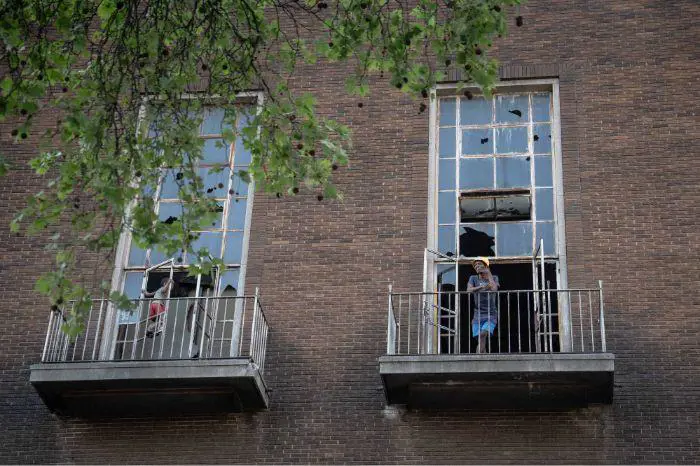
People stand on balconies of what was the Presbyterian Church on the corner of Wolmarans Street in the Johannesburg CBD. Picture: Jacques Nelles/Eyewitness News
During a visit to the building, three occupants who were part of the ‘building committee’ denied Eyewitness News access.
The illegal occupants of the building are represented by non-profit human rights organisation, the Socio-Economic Rights Institute (SERI).
Edward Molopi, research and advocacy officer at SERI, said their role was to ensure the rights of the poor were upheld.
He claims at least 90% of the occupants they represent are South Africans, with the minority being foreign nationals.
He said should the rights of these illegal occupants not be upheld, tens of thousands of people would be homeless.
“Our approach is that poor people need to have a place in the inner city, and we don’t think it is the role of property developers to make that accommodation available. They have a role to play, but it’s the state's responsibility to ensure that that is made available.”

A room untouched by a fire that ripped through parts of an illegally occupied building in the Johannesburg CBD. Picture: Jacques Nelles/Eyewitness News
Pressage Nyoni, liaison officer at Trust for Urban Housing Finance (TUHF) - a financial institution that finances property entrepreneurs within the inner city of Joburg said within the last 15 years, the inner city has deteriorated significantly.
“We have a number of buildings that are currently hijacked, and our clients find themselves spending a lot of money on litigation processes, which are very cumbersome and take very long to resolve, and as a result properties are hijacked.
“For me, it is the poor black investor who has taken his pension money and invested in the inner city and is losing it. I think the law has been a little bit unfair on the side of landlords. Buildings that are hijacked are never deprived of services - that gives you a certain thinking, ‘why?’ If someone has hijacked a building for five years, he’s not paying council, he’s not maintaining the building, a report has been made to the authorities and nothing is done about it.”
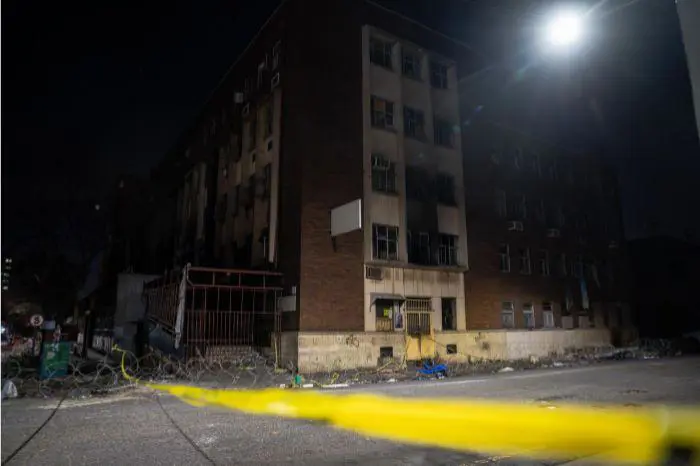
A cordoned off section of the Marshalltown building in the Johannesburg CBD after a fire killed 77 people and left at least 1,000 homeless. Picture: Jacques Nelles/Eyewitness News
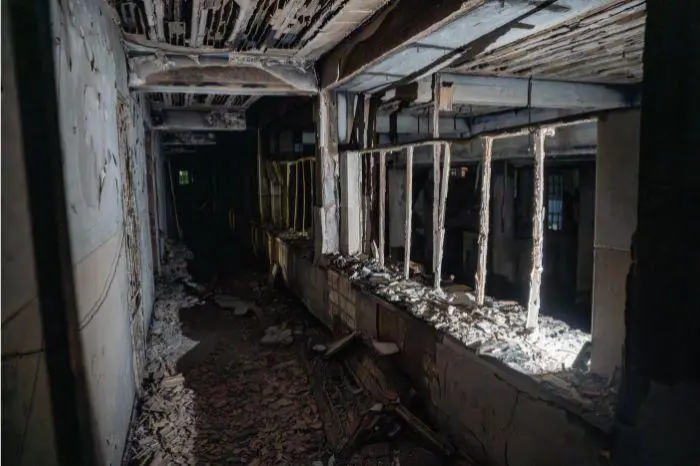
A burnt out corridor in the illegally occupied Marshalltown building in the Johannesburg CBD after a fire. Picture: Jacques Nelles/Eyewitness News
RENT ‘BOYCOTT’ PLAYBOOK
Property Attorney Greg Vermaak, who has worked on evictions of illegal occupants in buildings within the inner city since the nineties, distinguished between two forms of building hijackings.
“In the early 2000s, the city started dealing with what we call the ‘bad buildings’ and I evicted over 400 buildings of the type of Albert Street between 2001 and 2006 - leaving a relatively small number of these bad buildings. That was the period of what you call building hijackings, someone would arrive with a gun and say, ‘I am the owner now, and you will pay me rent’.”
He said within the last 15 years, a different modus operandi has been adopted by building hijackers where legal occupants of a building form committees and refuse to pay rent to the landlord, taking it upon themselves to maintain the building.
“What tends to happen is, if you have a building where there is some kind of argument - maybe people feel that the building is not being maintained adequately, you get the development of a committee and agree they will not pay rent. They try to pool their resources, collect their own rent to pay cleaners, security, and for services to manage the building. So, over the last 20 years, those have been the primary driver of hijackings - sort of tenant or committee hijackings.”

A view of a hijacked building in the Johannesburg CBD. Picture: Jacques Nelles/Eyewitness News
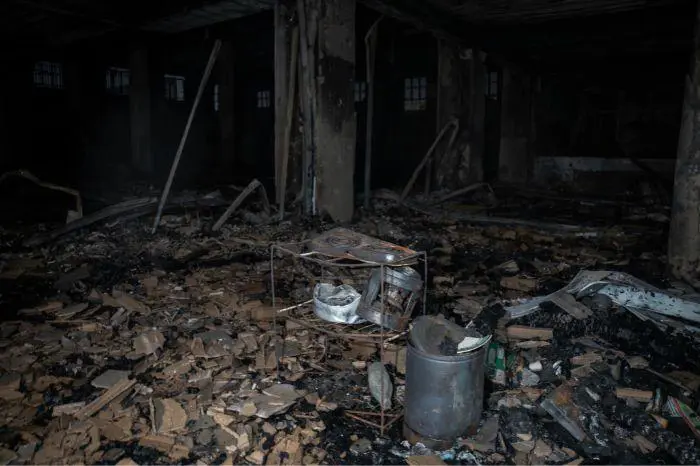
A view of a hijacked building in the Johannesburg CBD. Picture: Jacques Nelles/Eyewitness News
And despite Goldman, as well as countless other property investors hauling CoJ to court - they are ultimately left without recourse until temporary emergency accommodation (TEA) is provided for the illegal occupants.
This is due to a 2011 landmark Constitutional Court ruling referred to as the Blue Moonlight case.
In it, the ConCourt found that the CoJ could not evict occupants of a building without providing adequate TEA.
Thus, the ruling by the highest court in the land set a precedent in terms of how successful evictions can be carried out.
The ConCourt further noted that TEA should be a location as near as possible to the area where the occupants currently reside - creating further complications in terms of space within the inner city.
Get the whole picture 💡
Take a look at the topic timeline for all related articles.

